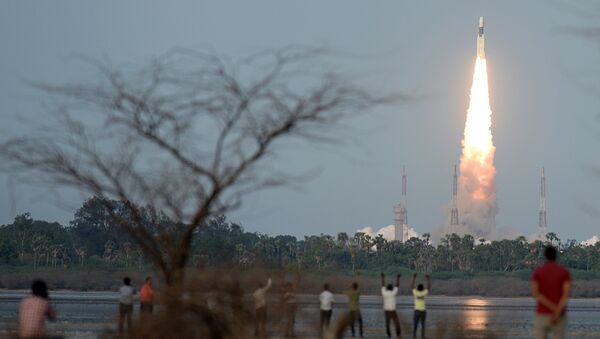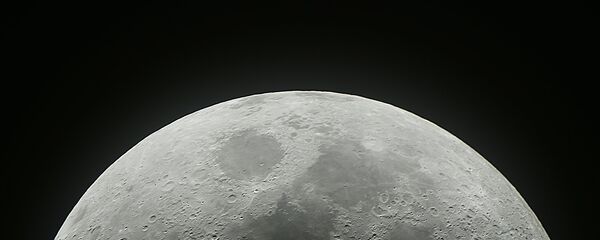New Delhi (Sputnik) — On Sunday the Indian Space Research Organization (ISRO) successfully conducted a ground test of its high-thrust version of the Vikas Engine that will enhance payload capability of the space agency's launch vehicles. The test, which lasted for 195 seconds, was conducted at ISRO's Propulsion Complex (IPRC), Mahendragiri in the southern Indian state of Tamil Nadu.
READ MORE: Indian Space Agency to Teach Foreign Students How to Build Satellites
"This ground test has validated the performance adequacy of the Vikas Engine for its use in the upcoming second developmental flight of GSLV Mk-III. This engine will improve the payload capability of PSLV, GSLV, and GSLV Mk-III launch vehicles," a statement issued by ISRO reads.
"All the propulsion parameters during the tests were found satisfactory and closely matched the predictions," ISRO added.
The Vikas Engine also powers the second stage and the four strap-on stages of Geosynchronous Launch Vehicle (GSLV) and the twin-engine core liquid stage (L110) of GSLV Mk-III. GSLV has a launch capability of 2.2 tons to Geosynchronous Transfer Orbit (GTO) while GSLV Mk-III can launch 4 tons of satellites to Geosynchronous Transfer Orbit (GTO). ISRO is planning to launch GSLV-MkIII-D2 during the second half of 2018 carrying a GSAT-29.
READ MORE: Indian Space Agency Claims To Have Saved $120 Mln on Second Moon Mission
ISRO has been working on reusable launch vehicles, cryogenic and semi-cryogenic engines and technology development of super heavy lift vehicles. The maximum launch capability to GTO of other space agencies is — USA: 14 tons, China: 13 tons, Europe: 10.5 tons, Russia: 6.25 tons, and Japan: 8 tons. The private US firm SpaceX recently demonstrated the launch of a heavy lift launch vehicle, Falcon Heavy, which can carry 26.7 tons to GTO.



